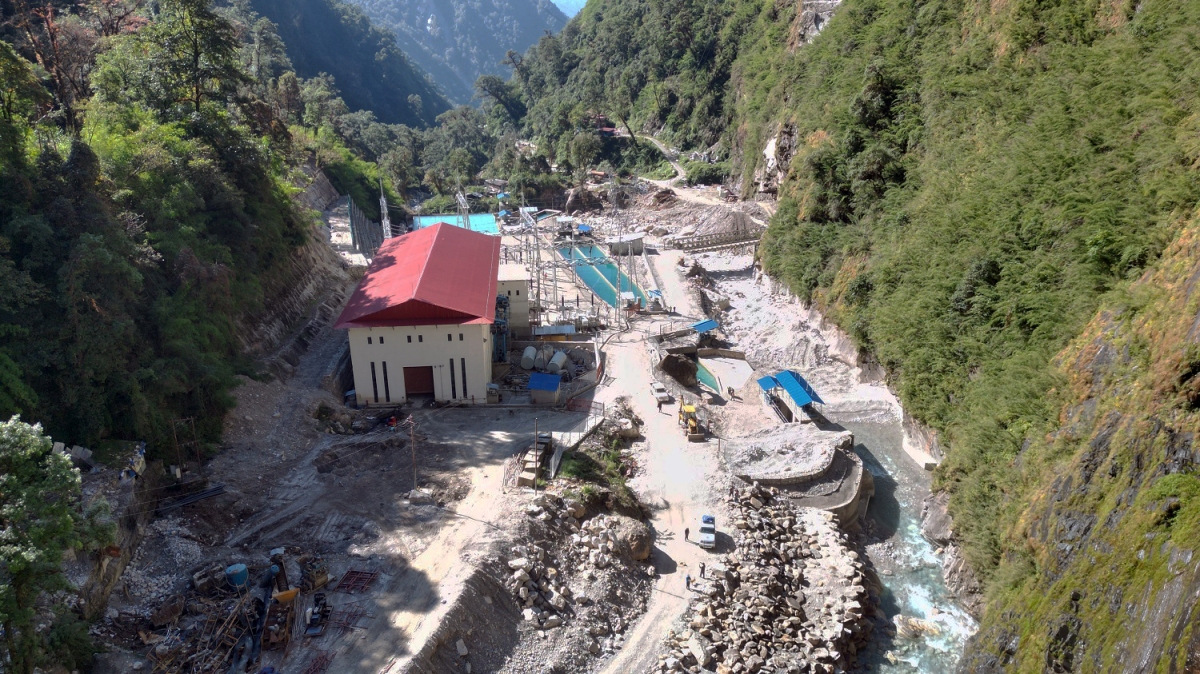

MYAGDI: A single ward in Myagdi district, Annapurna Rural Municipality–4, has become a major hydropower hub, with five projects totaling 162 megawatts already in operation along the Narchyang River.
In addition, a 63.3 MW project is under construction, and two more projects with a combined capacity of 173.14 MW are in the planning stage.
According to ward chairperson Lok Bahadur Pun, the operational projects include the 5 MW Ghalemdi Khola, 42 MW Mristi Khola, 38 MW Nilgiri-I, 71 MW Nilgiri-II, and 6 MW Rele Khola hydropower projects.
A 66.3 MW Middle Kaligandaki Hydropower Project is currently under construction on the Kaligandaki River, which flows along the border of Narchyang.
Preparations are also underway to start the 9.14 MW Super Ghalemdi Hydropower Project, while a 164 MW Kaligandaki Gorge Hydropower Project, promoted by Kaligandaki Hydropower Ltd., has proposed building its powerhouse in Narchyang.
Ward chair Pun said that the development of these projects has transformed Narchyang’s landscape and economy, contributing significantly to improvements in physical infrastructure, livelihoods, agriculture, and local business.
“Vehicles now run through cliffs we never imagined would be accessible,” he said. “Jobs and income sources have emerged locally, prompting many villagers who had migrated to cities or abroad to return home. Outmigration has largely stopped,” he said.
A technical school has been established, health institutions have been built, and the hydropower companies have constructed roads, bridges, and public buildings that benefit residents.
Local leader Tej Gurung said that land compensation, trading opportunities, agriculture, livestock farming, hotels, transport businesses, contract work, share investment, and daily wage jobs have all raised the living standards of villagers.
As per the constitutional provision, the royalties paid by hydropower companies are divided as follows: 50 percent to the federal government, and 25 percent each to the provincial and local governments.
The local school Prabha Secondary School has even introduced a Hydro Engineering program.
The Mristi Khola Hydropower Project first connected Narchyang to the national road network in 2014 after installing a Bailey bridge across the Kaligandaki River.
It has since built two additional Bailey bridges and a 14 km access road to the project site.
Similarly, the Nilgiri Khola Project constructed a road from Chhotepa to Humkhola, improving transport access and helping develop Annapurna Base Camp as a new tourism destination.
After a road to the Rele Khola project site was completed, Narchyang’s Beni and Lekgaun were connected to the local road network, according to ward member Shyam Purja.
Local residents have invested in founder shares of the Ghalemdi and Mristi projects, while the promoters of Nilgiri I, Nilgiri II, and Rele Khola are preparing for public share offerings.
To connect the electricity generated by these projects to the national grid, the Nepal Electricity Authority (NEA) built a 220 kV substation in nearby Dana in 2020.
Power from the Ghalemdi, Mristi, and Thapa Khola projects is already being transmitted through the central line.
With substations built in Dana (Myagdi) and Khurkot (Kushma, Parbat), investment in hydropower projects along the Kaligandaki River corridor has surged, said Pramod Shrestha, former vice president of the Federation of Nepalese Chambers of Commerce and Industry (FNCCI) and operator of the Ghalemdi Khola Hydropower Project.